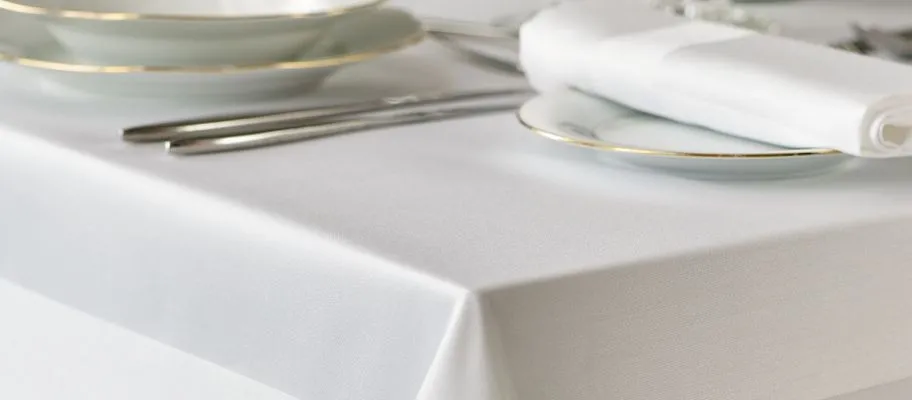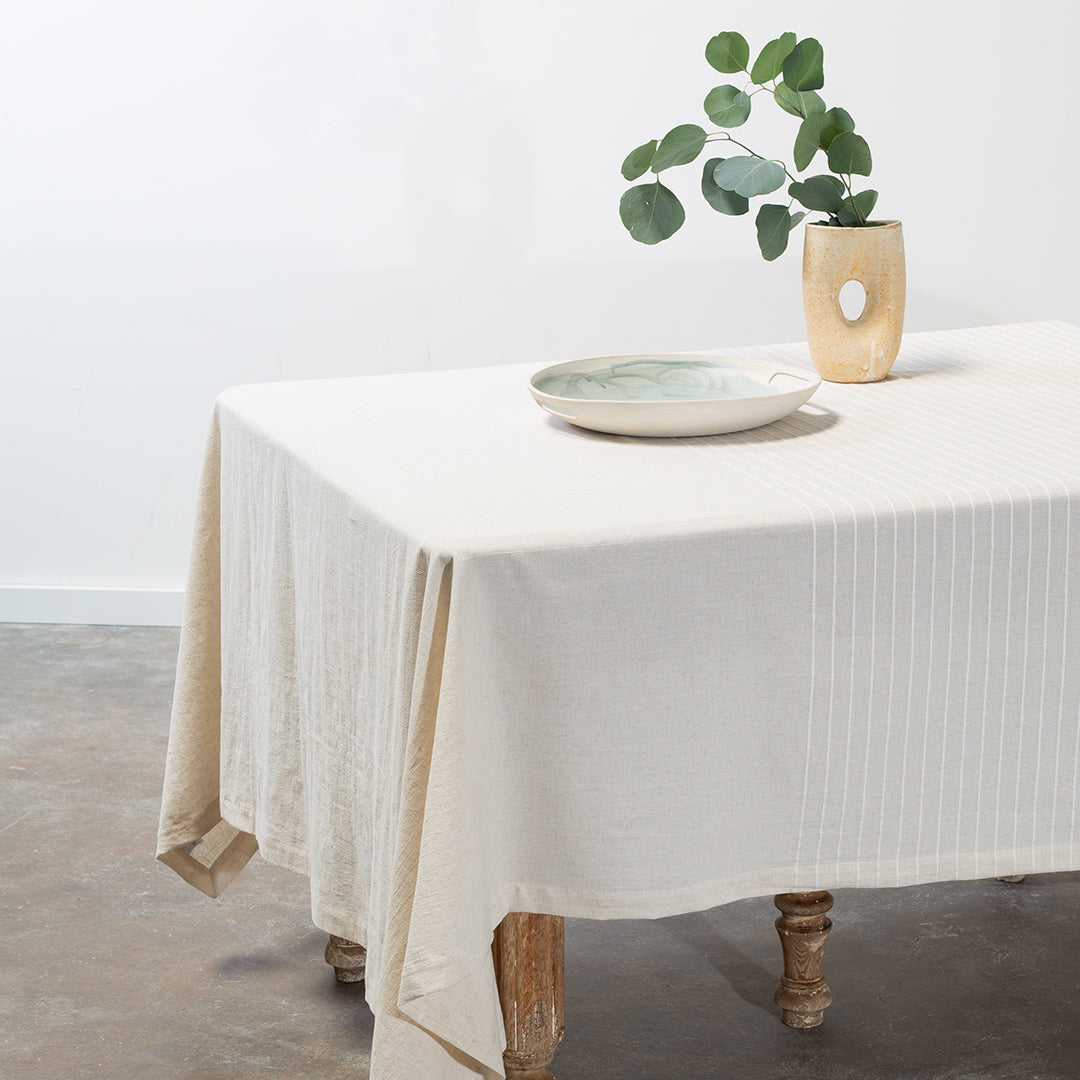Imaginative Table Runner Uses: Beyond the Table
Imaginative Table Runner Uses: Beyond the Table
Blog Article
Linen Material Developments: Exploring Modern Trends and Creative Applications in Design and Textile Sector
From lasting production methods to cutting-edge weaving technologies, the advancement of bed linen is reshaping the landscape of the textile industry. As we delve into the realms of imaginative layout applications and the emergence of bed linen blends and crossbreed materials, a new phase unravels in which linen's role in future fabric innovations takes facility phase.
Sustainable Practices in Linen Production
Lasting practices in linen production have actually become significantly essential in the fabric sector's efforts to lessen ecological effect and promote ethical sourcing methods. Bed linen, a natural fiber derived from the flax plant, supplies a variety of advantages such as resilience, biodegradability, and breathability. Nonetheless, typical approaches of bed linen production can include considerable water usage, chemical usage, and energy-intensive processes.
To resolve these obstacles, several fabric makers are embracing lasting methods throughout the bed linen manufacturing process. This consists of sourcing flax from organic ranches that prevent harmful pesticides and chemicals, applying water-efficient retting methods to extract fibers from the flax stalks, and using eco-friendly dyes and surfaces. Additionally, some firms are purchasing renewable resource resources to power their production centers and reducing waste via recycling and upcycling campaigns.
Technological Improvements in Bed Linen Weaving
With the expanding focus on lasting techniques in bed linen manufacturing, the fabric sector is now witnessing a surge in technological improvements particularly aimed at reinventing the art of linen weaving. These innovations are reshaping the way linen materials are produced, offering raised efficiency, high quality, and creativity in weaving strategies.
Among the essential technological improvements in bed linen weaving is the combination of electronic looms. These sophisticated looms are equipped with software that permits for complex and complex layouts to be woven with precision. By digitizing the weaving procedure, makers can attain greater uniformity and precision in their linen materials.
Furthermore, developments in thread spinning technology have made it possible for the production of finer and even more long lasting linen yarns - table cloths. This causes softer and smoother bed linen materials that preserve their top quality also after numerous usages and laundries
Furthermore, the development of environmentally friendly dyeing processes and finishes for linen textiles is getting grip. These lasting techniques not just decrease the environmental effect yet likewise cater to the raising consumer demand for ethically generated textiles.
Creative Layout Applications for Bed Linen
Ingenious imaginative techniques are progressively forming the creative design applications for bed linen in the fabric sector. Linen's all-natural visual allure and ability to mix with other fabrics make it a favorite choice for producing one-of-a-kind garments and accessories that provide to the environmentally mindful customer.
Furthermore, developers are explore bed linen in home style, utilizing its breathable and durable nature to craft stylish furnishings such as drapes, bed linen, and furniture. The appearance and drape of linen bring a sense of refinement and convenience to indoor areas, including a touch of beauty to contemporary homes.

Linen Blends and Hybrid Fabrics

Crossbreed fabrics, on the other hand, take the idea of mixing an action better by integrating added elements such as metallic threads, recycled materials, or conductive fibers. These cutting-edge fabrics not just expand the layout possibilities yet additionally present practical elements like conductivity, antimicrobial homes, or improved resilience. Crossbreed textiles are increasingly being made use of in various industries, consisting of style, interior decoration, and technological textiles, where the demand for multifunctional products gets on the increase.
Linen's Role in Future Fabric Innovations

In the realm of future fabric advancements, linen is anticipated to be a principal in the development of innovative practical fabrics. Scientists and developers are discovering means to improve linen's inherent top qualities with technological improvements, such as incorporating clever fabrics, nanotechnology, and efficiency finishes. These technologies intend to elevate bed linen's performance features, making it suitable for a broader range of applications, from activewear to safety clothing.
In addition, the mix of bed linen with other all-natural or synthetic fibers opens up limitless opportunities for producing novel textiles with one-of-a-kind buildings and capabilities. By leveraging linen's qualities and discovering innovative blends, the fabric sector is positioned to introduce amazing developments that accommodate evolving consumer demands and sustainability requirements.
Verdict
To conclude, the exploration of sustainable methods, technical improvements, creative layout applications, bed linen blends, and its role in future textile innovations highlight the continuous evolution of linen fabric in the contemporary style and fabric market. With a focus on technology and creative thinking, the adaptability and green nature of linen make it an important product for suppliers and designers alike, leading the way for further developments and improvements in the field of fabrics.
As we delve into the worlds of creative style applications and the development of bed linen blends and hybrid materials, a new phase unravels in which linen's duty in future fabric technologies takes center stage.
Discovering the combination of linen with various other materials has led to the emergence of innovative blends and hybrid textiles in the contemporary fabric sector. Bed linen blends use a special combination of the characteristics of bed linen with those of other fibers, resulting in fabrics that have boosted residential properties such as increased resilience, improved draping, read and decreased wrinkling.The advancement of linen blends and crossbreed textiles has actually established the stage for Linen to play a crucial role in driving future textile advancements.In the world of future fabric developments, linen is expected to be an essential gamer in the development of innovative useful fabrics.
Report this page